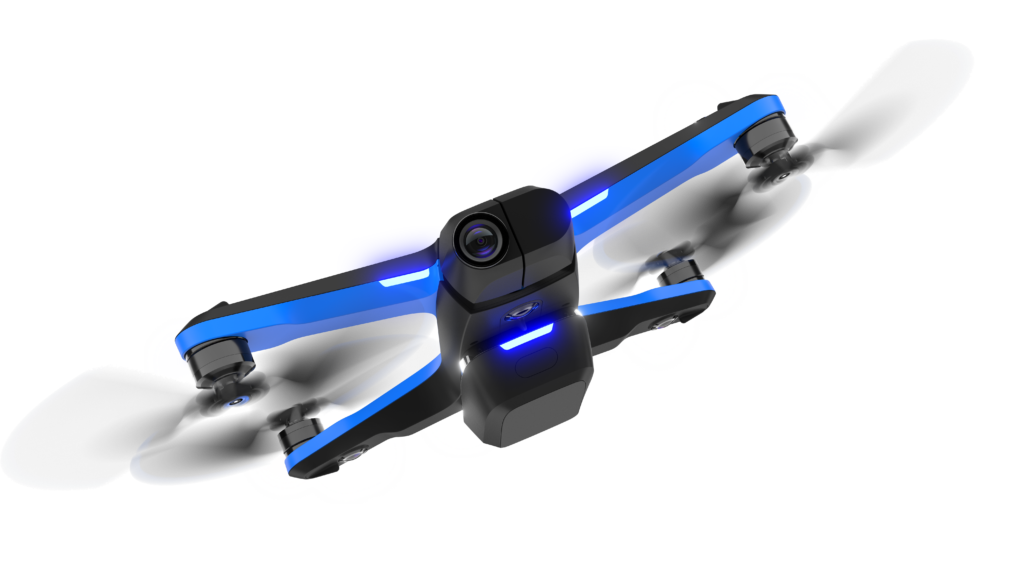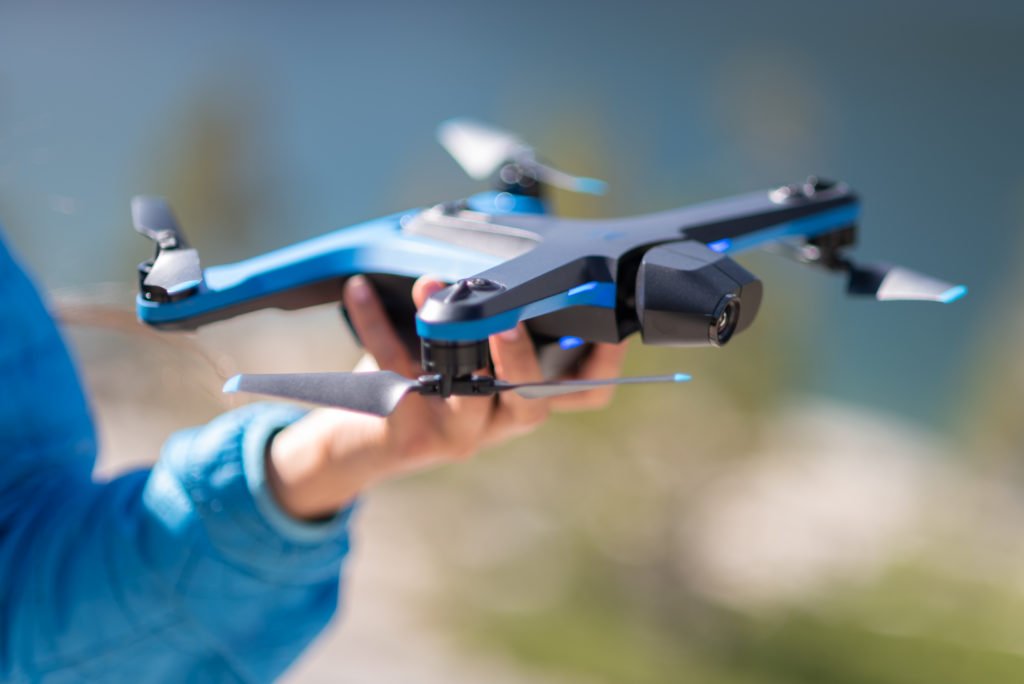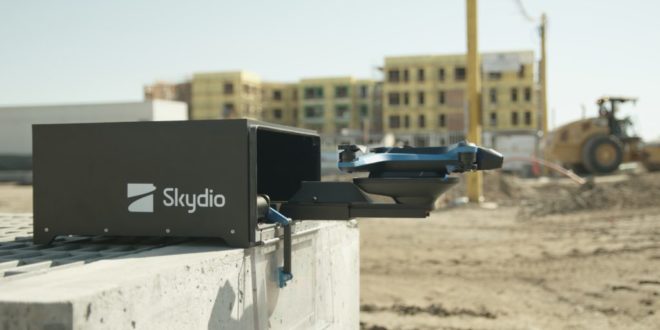Last month, California startup Skydio launched a new drone for the consumer market: Skydio 2. Then came a docking station that looks set to propel the same aircraft onto worksites around the country.
The first impression is that Skydio 2 is a drone that could provide serious competition to DJI‘s market dominance. It’s lighter, smarter, more compact and more versatile than the original R1. It’s also cheaper, with a better camera and a couple of accessories that make it an adaptable creative tool.
In short, everything is in place for Skydio to have a big 2020.
DroneLife recently spoke with Skydio CEO Adam Bry about the response to the Skydio 2, what’s changed under the hood of the new drone and the company’s plans for the future.
The first thing Bry admits is that the initial response has been overwhelming. The focus is suddenly on scaling up supply to meet the demand and having enough drones ready to ship for next year.
At the moment, customers can reserve a Skydio 2 with a $100 downpayment, but doing so now will place you in a queue for Skydio 2 production batch 3, which is expected to start shipping in the 2nd quarter of 2020.
“The response has been phenomenal. I think that we tapped into something that a lot of people have thought about and wanted.” – Adam Bry, Skydio CEO
The Skydio Dock was announced last month, and will initially be launched with DroneDeploy.
This is only the beginning
In a short space of time, Skydio has risen to prominence as a manufacturer at the cutting edge of autonomy, pushing the boundaries of what’s possible with consumer drones. But Bry sees these latest developments as still scratching the surface of what will eventually be possible with the technology.
“My view on the whole industry: I think everything is still very early. With Skydio 2, we’ve got to the point where we’ve fulfilled the core product vision that we had, at a price and in a form factor that’s acceptable and useful for people.
This is a real milestone for the company and it’s a product that we’re incredibly excited to get out there. But I think that as an industry we still have a long way to go.”
The Skydio 2’s camera has been upgraded and almost every aspect of the hardware has been improved, culminating in a lighter drone with a longer flight time. Beneath the surface, the AI has also had a revamp.
Bry explains that Skydio 2 represents the next major revision of the company’s computer vision software. There are two key areas of progress.
First is an entirely new mapping system.
“With R1, we were using traditional stereovision techniques. We took that as far as it could go in terms of performance”, says Bry.
“With Skydio 2 we have an end-to-end deep learning system that estimates the depth and 3d structure of the world around it, which means it can use all the context that a person would. It knows if it’s looking at a tree, a wall, the sky or water, and it uses all of that to figure out the 3d structure.
This is one layer in, hidden from the user, but it means the drone moves in a much more smooth, reliable and repeatable way, so we can fly faster and see more challenging obstacles and structures that we couldn’t see previously.”
The second major change beneath the surface is the Skydio 2’s planning system: how it figures out which way to go.
“We’ve basically created a system in which the drone is simultaneously reasoning about what its motors are capable of, how fast each propeller can spin and how much thrust that will produce: a full aerodynamics model of the vehicle – along with its knowledge of the 3d world around it and the task that it’s trying to accomplish.
500 times a second, it figures out exactly what it should be doing with its motors. This is one of the reasons why the motion is now smoother, so much more cinematic and why we’re able to fly faster. Because when we need it to, it gives us faster reaction times.”

The Skydio 2
Read more: New Developer Platform Could Make Skydio R1 The Go-To Commercial Drone
A superior drone, for less
When the R1 was launched back in 2018, we were hugely impressed by the capability but concerned that the original $2,499 price point would put it beyond the reach of drone pilots and aerial photography fans.
The Skydio 2 is more advanced in every single department but is retailing for just $999. Bry says the accessible price is down to a number of things.
“Part of it is just making progress as a company. When we started building R1, when you go and talk to a supplier, rightly so it’s difficult to get them to pay attention and want to work with you at a significant capacity.
But having the credibility of the R1, we’re in a much better position to go out there, work with the world’s preeminent hardware component companies, and get the advantages of higher scale and higher volume.”
The Skydio team has also made a point of simplifying the hardware through further software advances. “The most obvious example is going from having the 12 navigation cameras around the outside to having 6 on the inside,” says Bry.

The Skydio 2: Affordable autonomy
“It’s a challenging algorithmic problem to do that because we’re now using rolling shutter fish eye cameras. Because they don’t expose all the pixels at exactly the same point in time, they’re very challenging from a computer vision perspective.
That’s something we’ve done a huge amount of work to enable. It lets us use lower-cost sensors but actually have better performance.
There’s no one single thing, but we’ve designed much for cost this time around. We have the technology foundation of the R1, better support from suppliers and several technological breakthroughs.”
Read more: Cape Ditches DJI for US-Made Skydio Drones Amid Security Concerns
Challenging DJI
DJI is often the drone industry’s he-who-must-not-be-named, particularly when you’re talking with manufacturers vying for a piece of their market share. But Skydio went against the grain with several references to the Chinese industry leader when marketing the Skydio 2.
Many of those references are direct. Footage on the website compares DJI drones to the Skydio 2. An image quality report that pits the Skydio 2 against several DJI drones is available to download. The first few seconds of the promotional video (below) are dedicated to a “dumb” DJI Phantom 4 flying straight into a street sign.
Some references are a little more subtle. Skydio have made an effort to highlight their ‘made in the US’ USP, for example. With DJI struggling to convince the US Government that their aircraft are secure and the backdrop of an ongoing trade war with China, the time certainly feels right for an American manufacturer to make a mark.
There’s a narrative that US companies can’t compete in this space. We obviously don’t think that’s the case and we’re hoping to prove that with Skydio 2.” – Adam Bry, Skydio CEO.
“I think there’s often this unspoken, elephant in the room thing when it comes to DJI,” says Bry.
“Our approach as a company and our culture is that we’d rather be upfront and honest about how we see things and talk about the stuff we know other people are thinking.
I have a lot of respect for DJI. They make really great products and they’ve obviously been responsible in a lot of ways for getting the industry to where it is now.
But we’re at this unhealthy point where they have so much market share that it stifles the ecosystem. In general, I think it’s always healthy to have different companies doing different things and going in different directions.”
Bry suggests many have read too much into the narrative that DJI’s domination is set in stone, that drones today are the way that drones are always going to be.
“I think we’re still very early, that there’s a lot of room in every direction for these products to get better in new and interesting ways. We’re not going to do all of that ourselves. DJI is not going to do all of it. There’s a lot more room for innovation and improvement than people realize and we want to be a big part of that.”
Later this week, we’ll be publishing the second part of our interview with Skydio’s Adam Bry. The focus of that will be the ethics of autonomous systems. Keep an eye out.
Malek Murison is a freelance writer and editor with a passion for tech trends and innovation. He handles product reviews, major releases and keeps an eye on the enthusiast market for DroneLife.
Email Malek
Twitter:@malekmurison
Subscribe to DroneLife here.
https://dronelife.com/2019/11/05/interview-skydio-ceo-adam-bry/
 Unmanned Aerial Vehicle The latest drone news
Unmanned Aerial Vehicle The latest drone news




